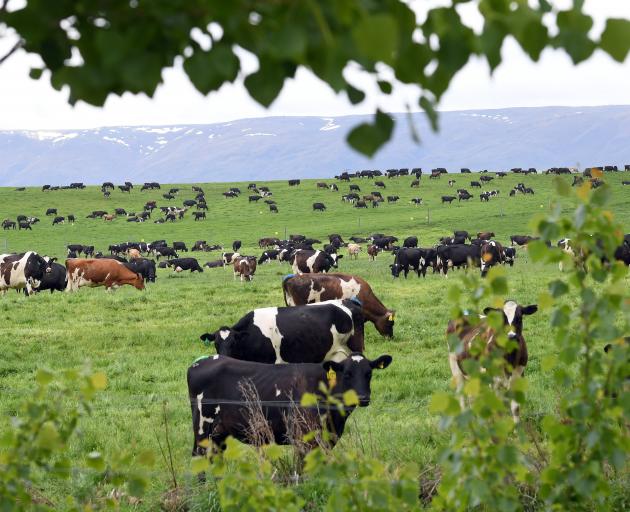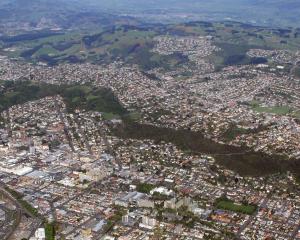
It is clear that all interested parties are concerned about the health of the Manuherikia ecosystem but it is also clear that individual opinions and perceptions are influenced by their particular interests and happenings at particular times and unfortunately seldom by data-based evidence.
In particular, there is a paucity of analyses of longitudinal data which are essential for science-based investigations aimed at explaining the changes in the ecosystem over time.
Current efforts for data collection seem to be more concerned with detection of problems at particular times and locations when what is needed is investigation of factors which produce changes and which evolve over time due to influences such as animal and human demographics and climatic factors, with an overall objective of improving understanding of factors which are likely to influence both favourable and unfavourable changes in the ecosystem.
A three-step programme would be appropriate for an integrated approach for the design and implementation of a surveillance programme to detect risks for the health and wellbeing of the Manuherikia ecosystem.
The issues are complex and prone to changes in the ecosystem of varying intensity and duration and are a challenge for science-based analysis and reporting.
However, a science-based approach is fundamental for decision-making and refuting or accepting various perceptions and hypotheses.
The first step would be to identify and agree on the risks and set priorities for data collection and analyses with input from the local community. This process would involve a preliminary assessment of the quality, adequacy and appropriateness of data which is routinely collected and stored, and an analysis of available data.
The second step would be to implement evidence-based surveillance procedures, which would include factors such as the health and demographics of human communities and animal populations, environmental health and climate factors, and provide for spatial and spatiotemporal analysis.
The findings would be synthesised by modelling to predict future changes and develop action plans and risk analysis.
The third step would be to integrate human, animal and environmental event monitoring and investigate the causes of problems and evaluate the efficacy of interventions aimed at mitigation of problems.
As part of step 1, the Otago Regional Council collects data which reflects water health and sustainability and this should be examined and analysed as soon as possible in conjunction with data on factors which are known to influence ecosystem health and include human population densities, animal population densities and makeup, climate and farming practices such as irrigation and fertiliser use.
The objective would be to identify associations between factors that may influence ecosystem health and incorporate ORC data which has been routinely recorded over space and time. Data for animal population makeup over time for the catchment is available for individual animal enterprises through Agribase.
All farms in New Zealand are georeferenced in Agribase along with information on stock numbers and some farm practices. The ORC has been a licensed holder of AgriBase data on and off since around 2010 and Agribase holds additional data back to 2000.
Livestock and farm type, human population changes and spatial information should be plotted over time against other historic data on water quality and flows. The outcome for the analyses will depend on the quality and adequacy of the data but it is important not to dismiss the proposal out of hand because of uncertainties about the data.
Regardless of the outcome, the exercise will identify gaps and point to areas where data collection needs to be improved or implemented in order to develop a system which identifies and predicts changes over time. It may also be possible to model predictions on the effects from increasing the height of Falls Dam and increased irrigation and stock density on the overall health of the catchment.
Raising the level of Falls Dam or other options for increased storage of water should not be seen solely as opportunities to add more livestock to the catchment but rather as an opportunity to provide acceptable outcomes to all interested parties.
An example of where data collection needs to be re-evaluated is for nitrate levels in groundwater.
There are currently only five fixed site locations where nitrate levels are recorded in the Manuherikia catchment and their locations, apart from the Donnelly Rd site, do not reflect likely risk from nitrate.
Nitrate levels are a known human health issue and people who rely on groundwater for consumption need to be aware of the risks. An appropriate response to the Connelly Rd bore finding would be to extend the monitoring area to include locations which are likely to be at increased risk, such as places close to intensive dairy enterprises and equally importantly to inform residents in areas of possible risk and encourage them to have their groundwater nitrate levels checked.
Economic modelling commissioned by the ORC considered three types of enterprises and gives useful insights into the effect of different minimum flows on profitability.
However, the models contain some uncertainties, especially for levels of debt which are unlikely to be constant over time and individual variability in enterprises and efficiency of their operations.
The sheep and beef farm model was for crossbred sheep, 135% lambing and negligible returns for strong wool. It contrasts with fine wool enterprises in the region, some of which achieve 130% lambing and $45 to $50 per ewe for 18 to 22-micron wool. The choice of the crossbred sheep enterprise was surprising because the predominant enterprise type in the catchment is probably fine-wool production.
The report concluded that profitability for the chosen enterprise type would be affected by increasing minimum flows but there are avenues for mitigation over time through changes in enterprise type and levels of debt.
The economic models do not reflect the diversity of enterprises and more information on the various types of dairy enterprises in the catchment in relation to their makeup and profitability would also have been helpful.
Future prospects for dairy farming in the catchment need to be considered because of local and global adverse environmental effects from current dairy farming practices.
The heath and wellbeing of the environment, people and animals (One Health) needs to be considered together along with due consideration of the precautionary principle for new proposals.
- Ron Jackson is a veterinary epidemiologist from Central Otago.












